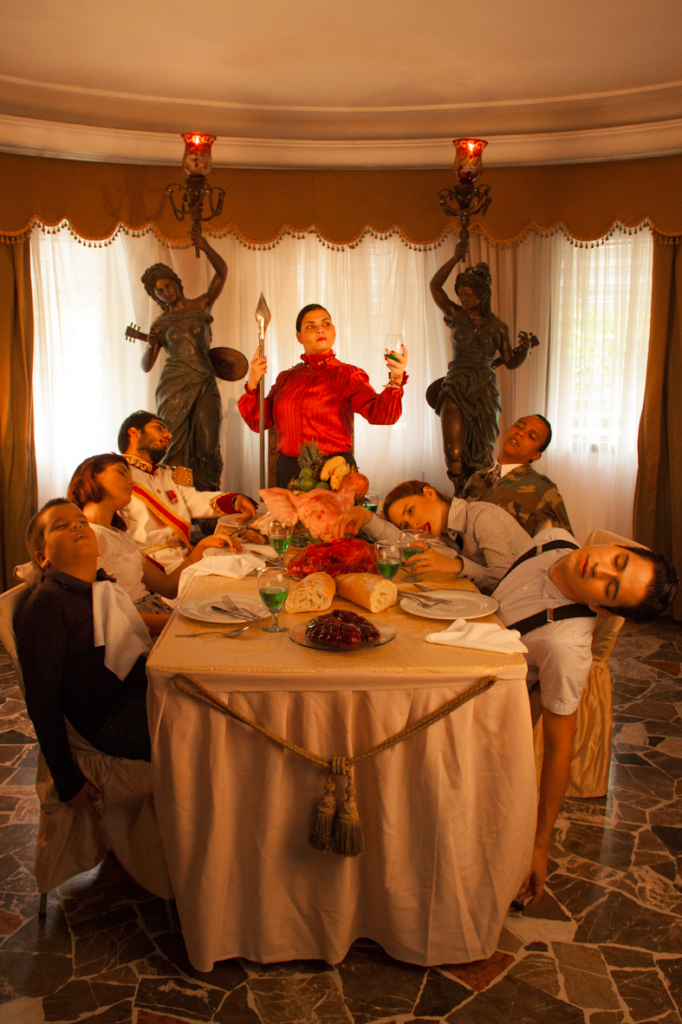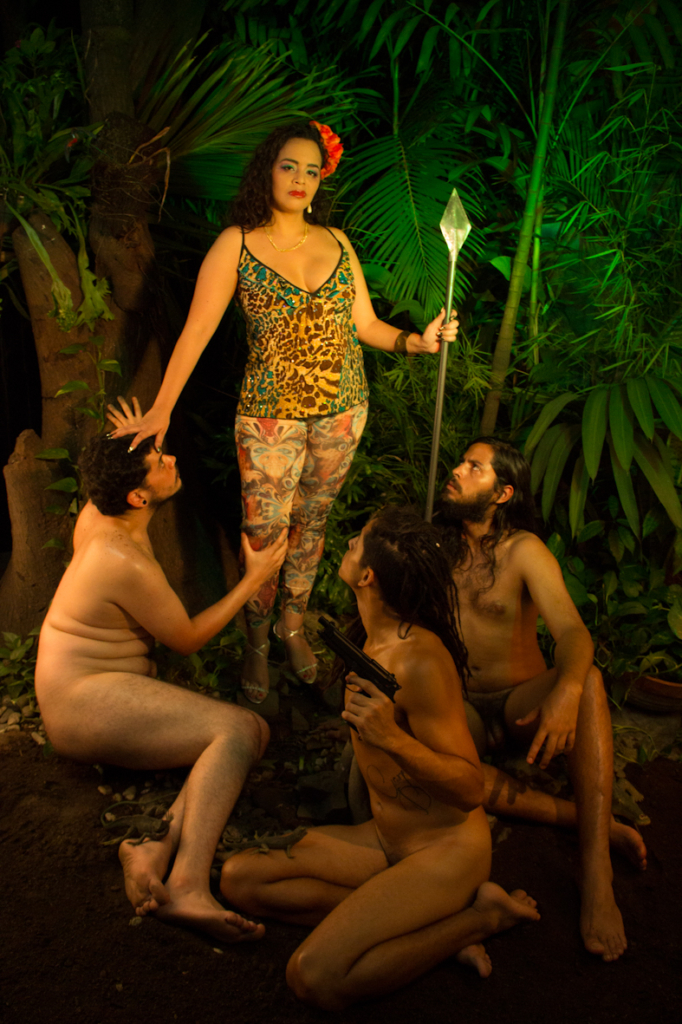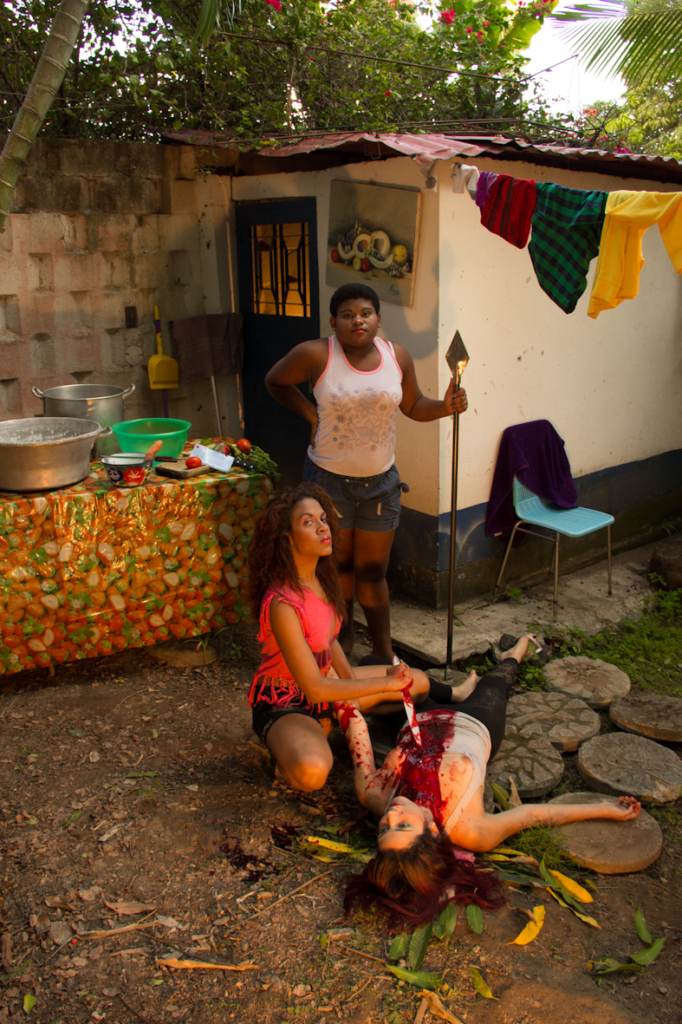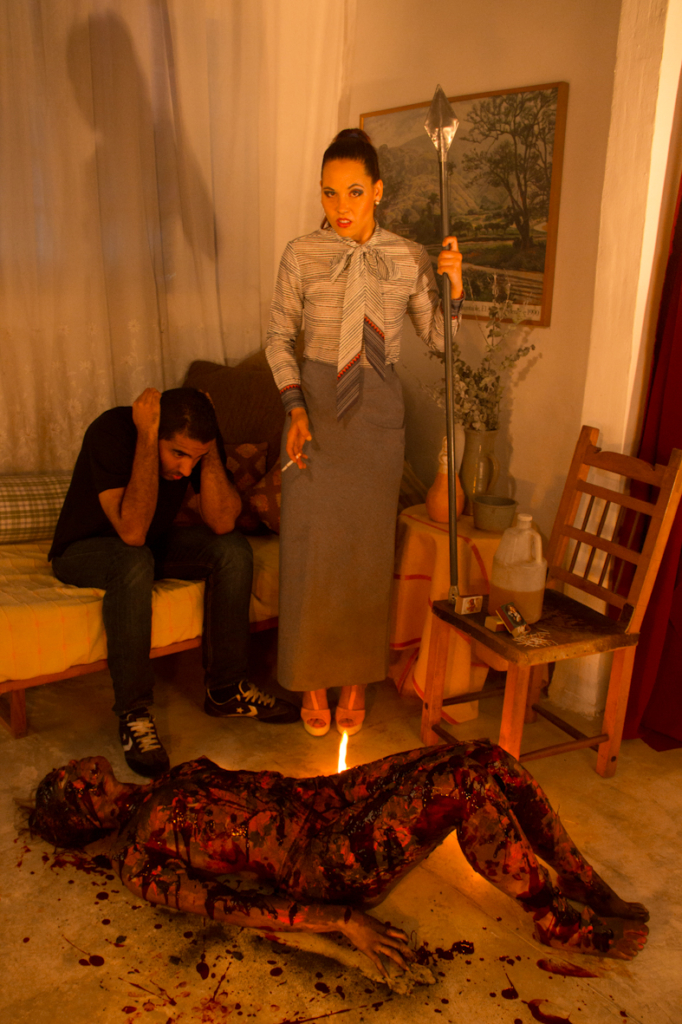Elizabeth Marín Hernández, PhD
Department of History of Art
Universidad de Los Andes, Venezuela
Translated by Daniel Esparza
From time immemorial there have been crimes committed by women who were driven to pursue their own power. These transgressive crimes center on the tearing down of established systems. They make it possible for us to reflect upon the meaning of the offenders sacrifice in Euripides’ Bacchae: offenders who, beyond their frantic alienation rise, as Medea did, through a reflective process that leads to a destruction that does not horrify them and that few of them repent.
As in Euripides’ Medea and Bacchae, women today are at the bottom of a justice system that is overwhelmed by evidence of gender violence. Calling this violence “femicide” brings it home in a way that continues to root it in an idea of female “otherness”. In the language used by contemporary criminologists, gender violence, in all its range of meaning can erroneous lead to the oppression of all humans. Offenders are transformed into the victims of patriarchal systems who are deceived and abandoned. Transformed into victims, the offenders become absolved of all responsibility for their actions. They illustrate a perspective of femininity in its poorest and most precarious state.
Reflecting upon this clearly ambiguous situation leads to us to think about the “feminization of crime” with greater conceptual complexity than victims or offenders, control or lack of control, or patriarchy or feminization might suggest. The empowerment of women over the last hundred years has led to a dilution of these kind of limits – but these limits were already being exposed and denounced over a thousand years ago. The control of an otherness that comes out of itself and is attributed to femininity, is evident in the Greek tragedies of Bacchae and in Medea.
Women who are seen as discrete figures within a judicial system, imprisoned by the stories of power they hold over others, orchestrate particular sacrifices. The women who, like Euripides’ Medea, emerge out of these fateful situations have had to make extreme decisions. Their desire for revenge is bent and provoked by strong states of tension. Medea is a reflective character. She does not respond impulsively to the fluctuations of her passions. Her rational recognition of the situation in which she finds herself and her understanding of the circumstances that have led her to such a state, leads her, inevitably, to a search for revenge.
Knowledge and alienation go together in women who have come to represent the feminization of crime today. Within the decline of a paternal regime, offenders and victims are both subject to the anomalies of a system that does not know or cannot find the right place for discourse about femininity. This is even more so in a country like Venezuela where crime has become a guarantee of existence. Based on her experience with women who have been classified as criminals, Gala Garrido’s (Venezuela, 1987-) images echo this contemporary problem. The conception of her images in her series The Bacchae (2014-2015) returns to Euripides’ Bacchae and Medea with the idea of understanding the reasons for these women’s actions. Hidden within the Venezuelan prison system, in the midst of a reflective state, the artist encounters the reality of the feminization of crime. Her images are evidence of this theme which has been untouched by time; recurrent, fractured, and outside of all social organization.
Today again the Bacchae and Medea are relevant and deeply meaningful. They are the manifestations of certain patterns attributed to the female world; revenge for being abandoned or left behind; the way out of poverty; the evidence of the victim; the loss of sanity; and the manipulation of the female sensibility. In order to show us an “exploration of the insurgency of the irrational within a society” Gala Garrido places these questions to her Bacchae in dramatized scenarios of as yet untold stories. As in ancient Thebes, Venezuela today is a country disfigured by the most devastating assault on reason. Our territory is assaulted by unreason and every form of impunity has become normal.
Conceived as a satire, The Bacchae, as organized and presented by Garrido, do not find themselves in the interpretative anchoring of a single reading of the signifiers for alienation and perversity of the feminine. Garrido’s Bacchae extend themselves inwardly into an accumulation of cultural images showing the feminization of crime. In Garrido’s hands ‘The Bacchae’ carry out a localized strategy of discursive and representational appropriation in four layers.
The first layer connects these women to antiquity through the various stagings of filicides, parricides, rapists, murderers, or more novel crimes such as drug trafficking. Then and now, the Bacchae are outside of all norm; they are dogs set to hunt their victims.
The second layer is evidenced by their presence. Garrido’s Bacchae narrates the violence and the horrors committed by these women in ecstasy not as the evidence of a violent assault to reason, but rather the presence of those Dionysian women the artist met and whom she found shared with her experiences regarding the feminization of crime. They live in and through the re-staging of their crimes. They are not just echoing former terrors or feminine violence but they are a palpable presence carrying the staffs of Dionysian power conceived in madness as punishment.
The third strata is discovered in the appropriating and quoting of Euripides’ tragedy. The artist’s strategic updating of Bacchic violence directs our attention toward the knowledge and awareness of current sociocultural issues, sheltered in gender theory, from which the criminal women of our time (and their possible discursive modalities) emerge, both as victims or/and offenders. In her series, Garrido provides us with a local reference to Euripides’ Bacchae and presents an updated version of the feminine figures and their crimes.
Their names and definitions refer to widely known criminal roles (narco-mules) and crimes (infanticide) and hence, the series is framing a specific, current state of affairs: ours, the Venezuelan situation. Here women and crimes are not romanticized as if they occurred in a passional outburst – or as if they were just the consequence of a dominating system. Here these women engage in real actions which are, at the same time, “fictionalized” by the photographic medium. The photograph is the ideal element through which the visual discourse these criminal images, shown in perfect order, can be obtained. Once appropriated and mimicked, these scenes set a critical distance, enabling and inciting the discourse around criminal feminization. Images such those of Cybelle, Yennifer, Mules, Mother and Daughter, Last Supper, or The Rapist from Ocumare, take us on a trip down a minutely conceived and organized criminal psychogeography. Here is a mental map for the loss of the human condition; a sample of the absence of every norm in which it seems as if the forces of madness are responsible for the emergence of the perverse. Hence, the intentional presence and insistence on the Dyonisian Thyrsus in every one of Garrido’s Bacchae. The Thyrsus is the expression of a cultural element which refers to the domination of vengeance and violence as the lowest human level. The non-apprehensible human reality not yet controlled by social cohabitation makes these women the bearers of an outsider condition, a non-domesticated alterity, the manifestation of pure animality.
The final layer shows Garrido’s appropriative formulation of cultic and cultural symbols. These symbols refer to the sociocultural determinants attributed to the feminization of crime: factors such as poverty, social system domination, feminine emotions, women’s potential to excerpt personal power on others, and love and vengeance (as seen in the images of The scorched, I’ll chop its head off or The black woman).
Garrido’s Bacchae present us with a whole criminological gallery built from particular decisions, and uniquely defining actions that emanate from females facing abject situations. These situations dilute these women’s possibilities to be autonomous and self-governing women. Instead they are turned into subjects without norms, a subject who should neither exist nor become the true non-existent “woman.” Garrido’s Bacchae are the specular reflections of this reality that has been barely seen and which, once poured into the configuration of its critical and discursive images, presents us violence as an occult element of our own social and cultural configurations. In them, the crimes are highlighted as conscientiously staged scenes in a quasi-baroque elaboration which is non-poetized and non-complacent and includes metaphorical, cultic, and irreverent elements that theatricalize violence to the extreme.
The Bacchae opens a new space for insubordination. It opens a space within which we are invited to reflect and know violence as the always-there fatal condition of femininity. This is a violence which is apparently and always triggered by others; by the male, by society at large, and by contextual situations. Gala Garrido explores such a “night,” rubbing it in our faces in the same way she heard it from the lips of the modern-day imprisoned women in the INOF penitentiary in Los Teques, Venezuela. Garrido is the messenger, the interpreter of the myth of Bacchic violence. Her Bacchae are a reflect her awareness of the feminization of crime in our complicated age. They burst with discourses and matching corrections. Her intention is to make them part of our contemporary language, to make the invisible zones of feminization –those that cannot be integrated into social life- visible and sayable. Only then can we understand the criminal actions women perform, those actions which can be found hiding in the occult corners of our sociocultural memories. Through the appropriation of this “outsider-outsiding” persistence, the artist presents the endless refrain of that which we would rather not be shown about the feminine condition. In The Bacchae, women find their cause in the feminization of the world. The Bacchae are offending women and perverse women who recognize their destructive nature and the power within it; the chaotic potency of all time. Garrido’s Venezuelan Bacchae pressure and fracture our discourse on the feminine, on our human condition, and point to an ancestral alterity still lying in the order of societal speeches.
- Gala Garrido (Caracas, Venezuela, 1987) is a Venezuelan photographer. The central axes of her work are power and eroticism from the feminine. Garrido has exhibited her work at the Museo de Arte Contemporáneo del Zulia (MACZUL); Sala Mendoza; Museo de Arte de Acarigua-Araure; Sala de Exposiciones Centro de Arte El Hatillo; Panorámica Arte emergente en Venezuela 2000-2012, Sala TAC Trasnocho Cultural; Espacio Mad Los Galpones; No Lugar Arte Contemporáneo (Quito, Ecuador); and Féroces International Photography Festival (Lyon, France), among others.
- Website: www.galagalo.com / https://laong.org/who-we-are/
- Elizabeth Marín Hernández, PhD. Department of History of Art. Universidad de Los Andes, Venezuela
- Daniel Esparza, MA, is a Paul H. Klingenstein Fellow in the religion department at Columbia University, where he is developing his research on forgiveness as a PhD candidate.
![]()













